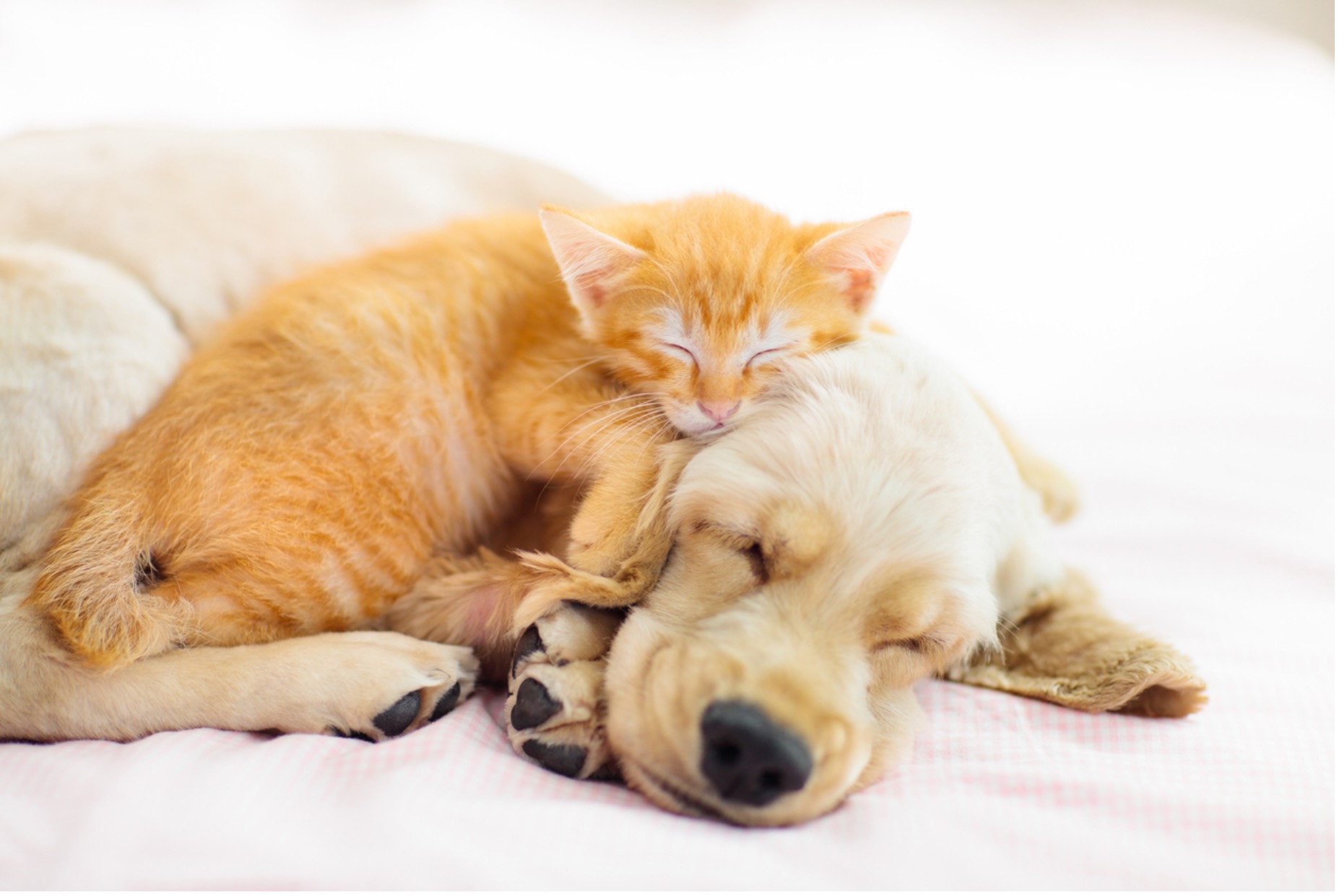Bringing a new puppy into your home is an incredibly exciting experience – but it can also be overwhelming if you don’t know what to expect. To ensure your pet has a happy and healthy life, it’s important to learn the basics of caring for a new pet by creating an environment that will welcome them into their new home.
1. Acquire Necessary Supplies
If you haven’t brought your new pet home yet, it is essential to equip yourself with the necessary supplies that they need. Depending on your pet, this may include items like:
- a bed
- food bowl and water bowl
- kennel or enclosure (if needed)
- litter box
- toys
Get your supplies in advance so that when your pet arrives, they immediately feel comfortable in their new environment.
If you received a pet as a Christmas gift, you may not have had time to get your supplies in advance. If this is the case, improvise as best you can until you can get the proper supplies. For example, kittens will do fine with a small cardboard box or box lid with litter for a litter box until you can buy an appropriate litter box. Newspapers will do for potty training a puppy until you can get some puppy pads.
2. Preparing Your Home for Your New Pet
Ensuring your pet has a safe, comfortable, and enjoyable environment is essential for their well-being. Provide them with the right type of housing and enough space to roam.
For example, if you get a dog, you should create a secure area that they can play in – this means fencing off your property from nearby roads or paths and sources of potential danger.
We highly recommend you keep cats indoors. Roaming cats can be hit by cars, get diseases from other roaming cats, and be attacked by roaming dogs or even coyotes if you live in an area where there have been coyote sightings. If you want your cats to enjoy the outdoors, catios or cat fences, such as those offered by the Purrfect Fence, are safer solutions.
Note: with the increase of land usage by humans for building and construction purposes, the habitats of coyotes have been compromised causing some to move into urban areas. They can pose a great danger to your pets. If you live in an area where coyotes have been sighted, only let your pets be outdoors under supervision. Otherwise, keep them indoors. This goes for small and large dogs.
3. Protect Your Pet from Poisonous Foods, Plants, and Products
Part of having a safe environment is ensuring your new pet is not exposed to any poisonous substances or toxic food. Just as a parent would child-proof their home to safeguard their children, pet parents need to pet-proof their homes. Pet-proofing starts with knowing which foods and substances around the home are toxic to pets. You can get a list of poisonous substances from our blog: COMMON PET POISONS.
4. Introduce New Pets to Resident Pets Slowly
If you already have pets in your home, introduce your new pet to your resident pets slowly. Pets can react differently to humans than they react to other pets. Some pets will get along in a very short time, while others can take time to warm up to each other.
Play it safe and keep new pets from resident pets until they get used to each other’s smells and presence, like sniffing each other from under a door or through a kennel or cage. Then introduce them slowly and ensure each pet can retreat safely in case either one becomes afraid or aggressive. Be patient! Pushing introductions too quickly with any pet can result in an unharmonious household that no one wants.
5. Give Them an Appropriate Diet
Providing your pet with a balanced and nutritious diet is essential to proper pet care.
Before you bring home your new pet, consult the breeder or rescue center regarding the type of food they have previously been eating so you can match their diet as closely as possible. It is important that you keep them on the same diet, and gradually change their diet if changing their diet is necessary. Below is a chart you can use as a guideline to gradually changing their diet.
6. Get Your Pet Microchipped and a Collar ID
Losing a pet is a heart-wrenching experience no one wants to suffer through. Even when you take every precaution you can think of, accidents can happen. A door is not shut correctly, the wind blows it open, and your kitten runs out. You think your dog is safely in their yard, but a serviceman leaves the gate open. Here are some sobering statistics regarding lost pets:
- Only 48% of dogs and 19% of cats are wearing identification even though recovery of a lost pet requires that the animal is wearing identification.
- Only 58.1% of microchipped pets were registered with the respective agencies, preventing recoveries.
To guard against losing your new companion, get your pet microchipped and get them a collar with an ID tag. If your pet already has a microchip and ID collar, ensure the microchip registration is up to date and in your name, and update the ID with your information. If your pet has not been spayed or neutered, you can get them microchipped at the same appointment for their surgery.
7. Get Your Pet Spayed or Neutered
There are many benefits to getting your pet spayed or neutered. The most obvious one is that it helps to lower the overpopulation of pets, resulting in thousands of animals being euthanized yearly.
Medical Benefits of Spaying or Neutering
There are also medical benefits to getting your pet spayed or neutered. Spaying helps prevent malignant or cancerous uterine infections and breast tumors in about 50 percent of dogs and 90 percent of cats. Neutering your male companion prevents testicular cancer and some prostate problems. Your pet gets the best protection if you have it done before your pet’s first heat.
8. Ensure Your Pet is Up to Date on Their Vaccinations
When adopting a new pet, ensure you get a copy of their vaccination records. It is important, especially for puppies and kittens, to keep them on their vaccine schedule.
Puppies and kittens are highly susceptible to infectious disease because their immune system is not yet fully mature. They receive protection through antibodies shared across the placenta and in their mother’s milk. Still, the defense is not long-lasting, and there may be gaps in protection as the maternal antibodies decrease and their immune system is still maturing.
Maternal antibodies can also interfere with a puppy’s or kitten’s vaccine response, so we recommend a series of vaccines to ensure that the puppy or kitten receives a vaccine as early as possible after maternal antibodies subside.
In many instances, the first dose of a vaccine primes the animal’s immune system against the virus or bacteria. Subsequent doses help further stimulate the immune system to produce the antibodies needed for long-term protection.
9. Give Them Plenty of Exercise
Pets who don’t get enough exercise get bored and boredom often leads to mischief. Additionally, lack of exercise sets the stage for weight gain which leads to other health problems. So, you want to start out on the right foot and exercise your pet.
- A healthy dog should be taken out for a walk for at least 20-30 minutes a day – more if they can tolerate longer walks.
- Cats naturally want to jump, climb, and scratch. If your cat is indoor only, provide them with one or more cat trees to climb and scratching posts. Wand toys or laser lights are great toys to stimulate cats and get them moving. We recommend you play with your cat 30-60 minutes a day. This time can be broken up into segments such as 15-20 minutes three times a day.
10. Schedule Your Pet’s First Wellness Check with Aspen Vet Clinic
One of the easiest and least expensive ways to keep your pet healthy is to bring them in for their wellness checks. Our puppy or kitten visit will include a full “nose-to-tail” physical examination. We will look for any signs of illness and make sure your new pet is in good health
Final Words
There is a lot to know about bringing home a new pet – no matter how well you prepare, challenges can arise with a new pet you didn’t expect. But we are here to help you keep your pet happy and healthy. Please contact us if you have any questions about your new pet and how to keep it healthy.
Your Friends at
Aspen Veterinary Clinic

